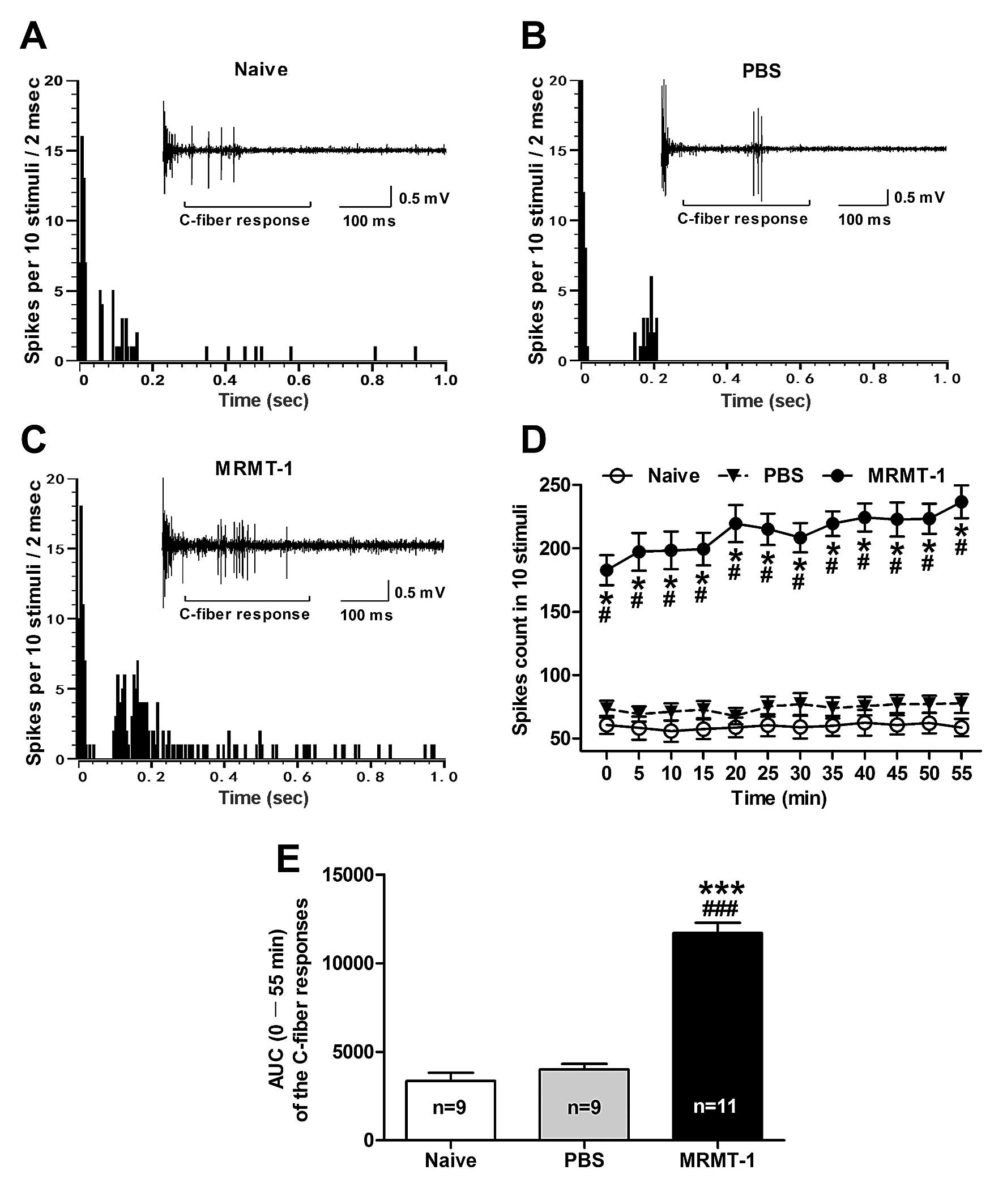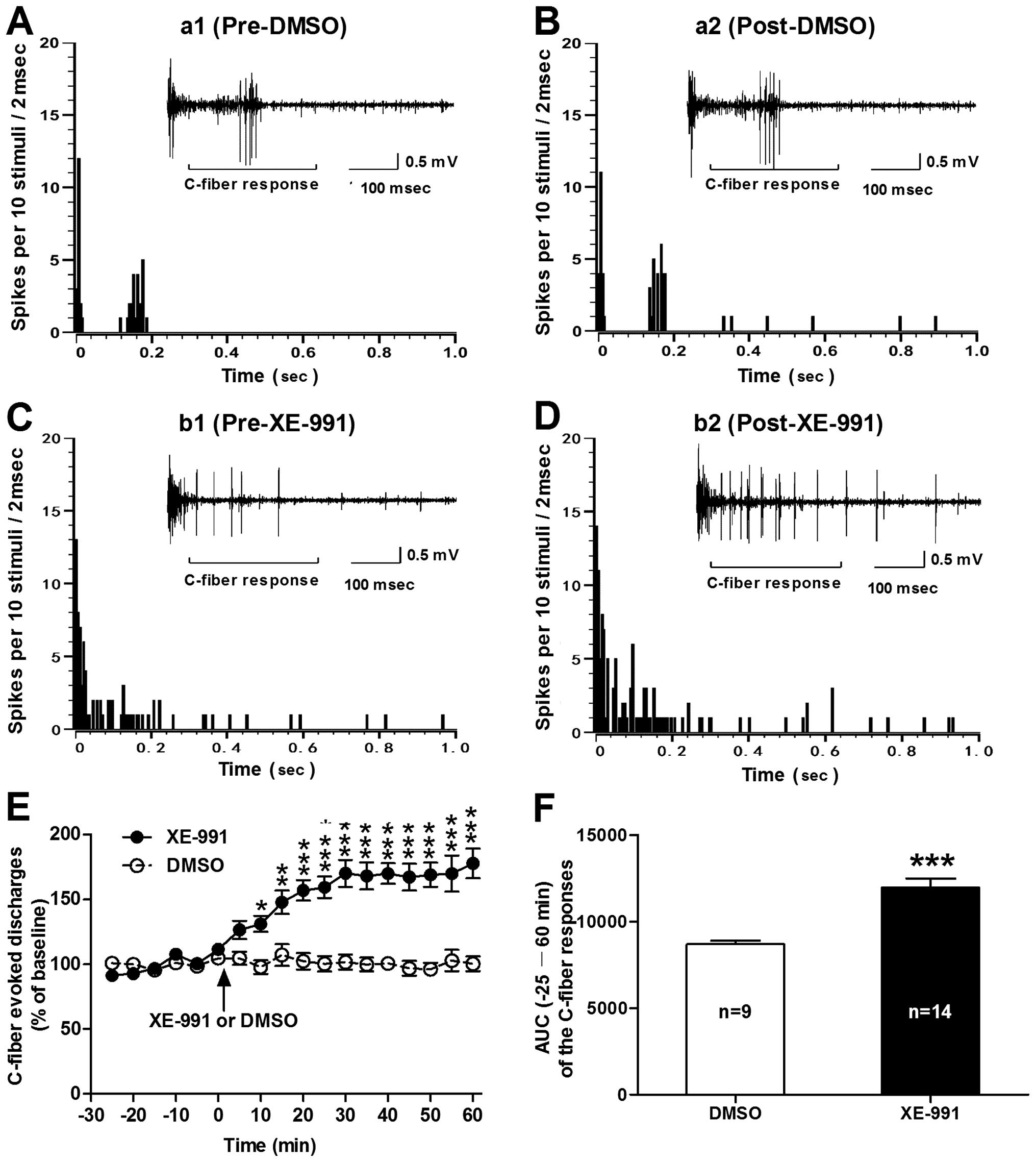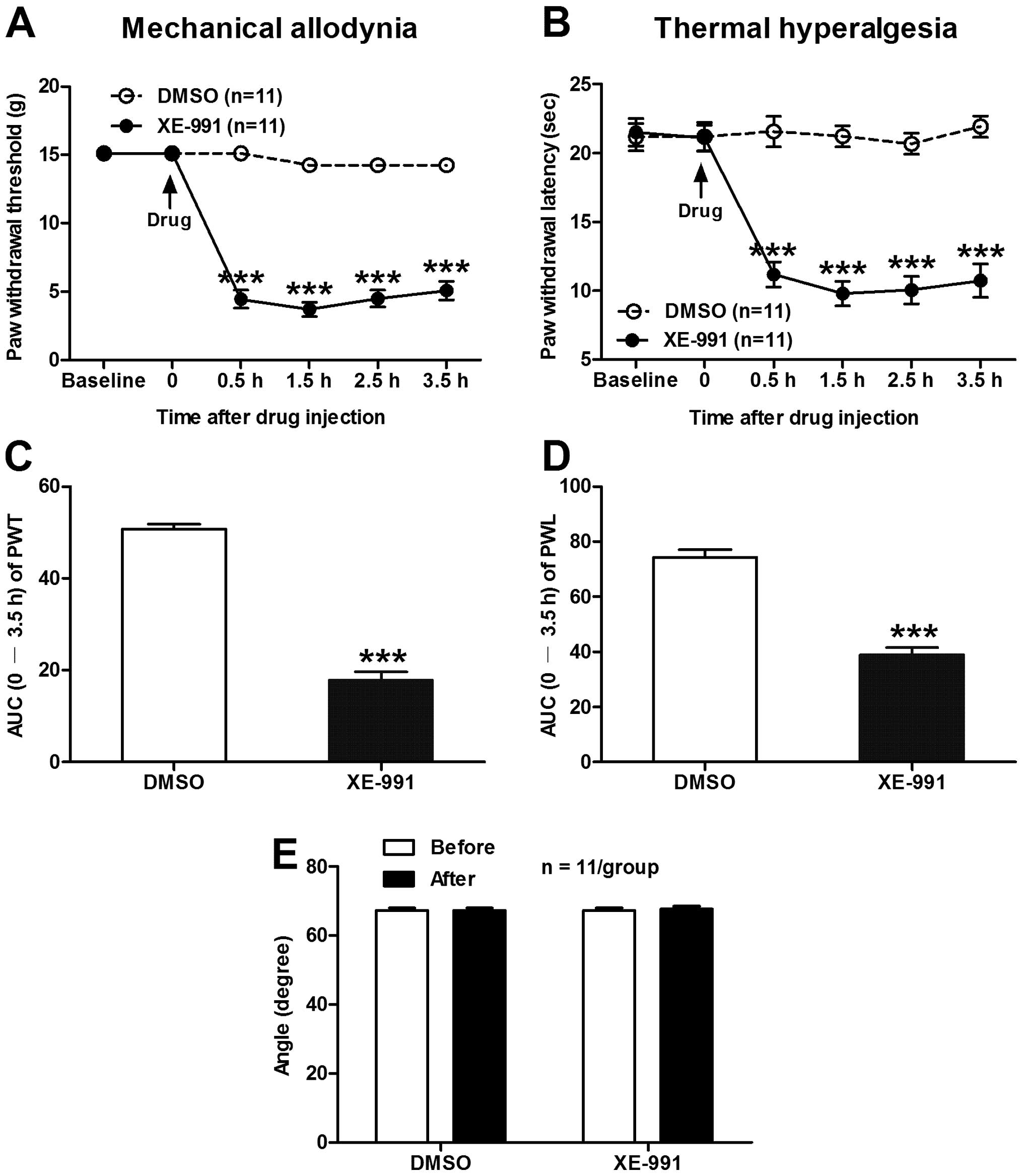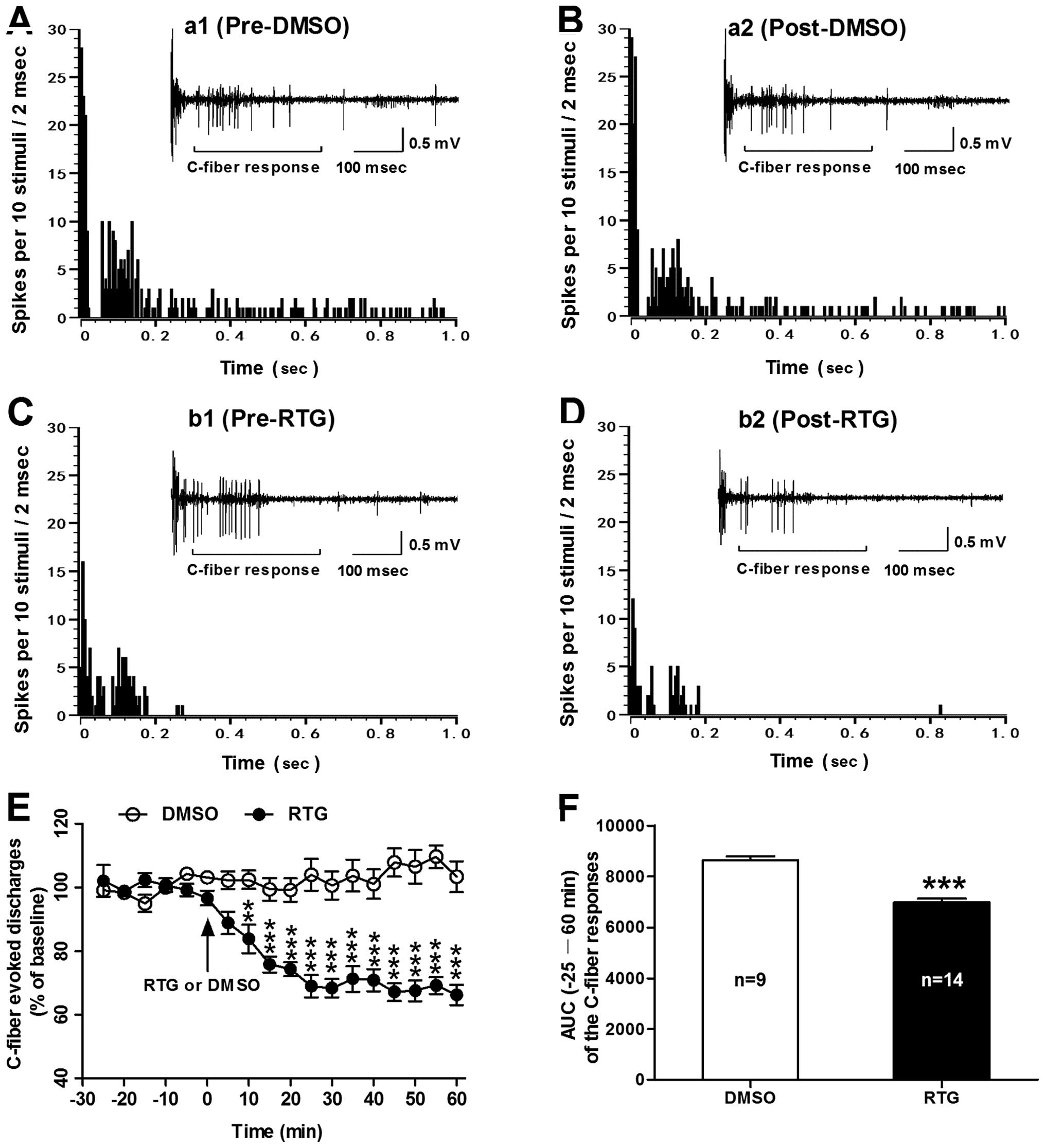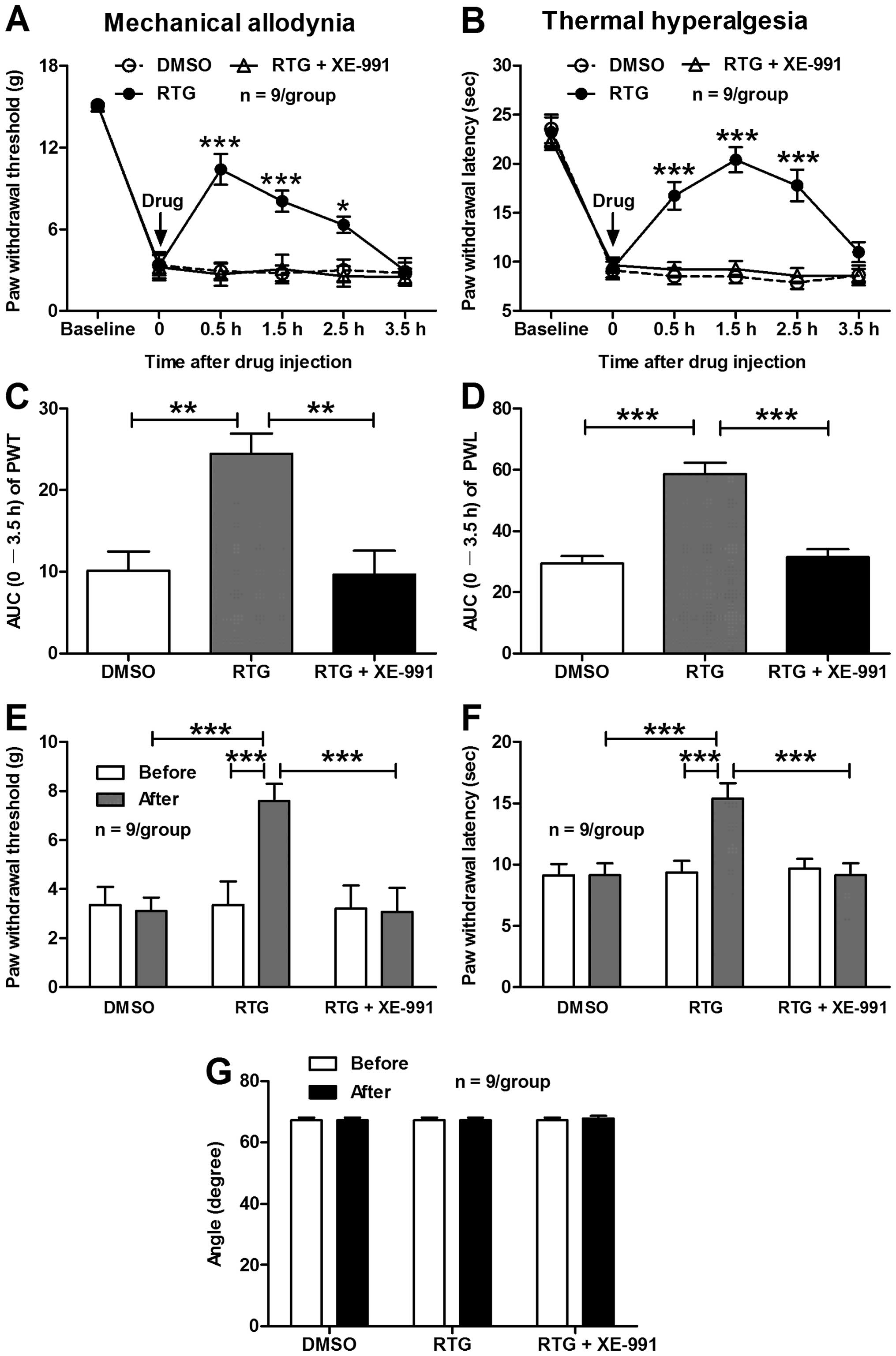|
1
|
Jimenez-Andrade JM, Mantyh WG, Bloom AP,
Ferng AS, Geffre CP and Mantyh PW: Bone cancer pain. Ann NY Acad
Sci. 1198:173–181. 2010. View Article : Google Scholar : PubMed/NCBI
|
|
2
|
Knopp KL, Nisenbaum ES and Arneric SP:
Evolving cancer pain treatments: rational approaches to improve the
quality of life for cancer patients. Curr Pharm Biotechnol.
12:1627–1643. 2011. View Article : Google Scholar : PubMed/NCBI
|
|
3
|
Middlemiss T, Laird BJ and Fallon MT:
Mechanisms of cancer-induced bone pain. Clin Oncol (R Coll Radiol).
23:387–392. 2011. View Article : Google Scholar
|
|
4
|
Paice JA and Ferrell B: The management of
cancer pain. CA Cancer J Clin. 61:157–182. 2011. View Article : Google Scholar : PubMed/NCBI
|
|
5
|
von Gunten CF: Pathophysiology of pain in
cancer. J Pediatr Hematol Oncol. 33(Suppl 1): S12–S18. 2011.
View Article : Google Scholar : PubMed/NCBI
|
|
6
|
Luger NM, Mach DB, Sevcik MA and Mantyh
PW: Bone cancer pain: from model to mechanism to therapy. J Pain
Symptom Manage. 29:S32–S46. 2005. View Article : Google Scholar : PubMed/NCBI
|
|
7
|
Urch C: The pathophysiology of
cancer-induced bone pain: current understanding. Palliat Med.
18:267–274. 2004. View Article : Google Scholar : PubMed/NCBI
|
|
8
|
Hamamoto DT, Khasabov SG, Cain DM and
Simone DA: Tumor-evoked sensitization of C nociceptors: a role for
endothelin. J Neurophysiol. 100:2300–2311. 2008. View Article : Google Scholar : PubMed/NCBI
|
|
9
|
Zhao J, Pan HL, Li TT, Zhang YQ, Wei JY
and Zhao ZQ: The sensitization of peripheral C-fibers to
lysophosphatidic acid in bone cancer pain. Life Sci. 87:120–125.
2010. View Article : Google Scholar : PubMed/NCBI
|
|
10
|
Zheng Q, Fang D, Cai J, Wan Y, Han JS and
Xing GG: Enhanced excitability of small dorsal root ganglion
neurons in rats with bone cancer pain. Mol Pain. 8:242012.
View Article : Google Scholar : PubMed/NCBI
|
|
11
|
Zheng Q, Fang D, Liu M, Cai J, Wan Y, Han
JS and Xing GG: Suppression of KCNQ/M (Kv7) potassium channels in
dorsal root ganglion neurons contributes to the development of bone
cancer pain in a rat model. Pain. 154:434–448. 2013. View Article : Google Scholar : PubMed/NCBI
|
|
12
|
Wulff H, Castle NA and Pardo LA:
Voltage-gated potassium channels as therapeutic targets. Nat Rev
Drug Discov. 8:982–1001. 2009. View
Article : Google Scholar : PubMed/NCBI
|
|
13
|
Biervert C, Schroeder BC, Kubisch C,
Berkovic SF, Propping P, Jentsch TJ and Steinlein OK: A potassium
channel mutation in neonatal human epilepsy. Science. 279:403–406.
1998. View Article : Google Scholar : PubMed/NCBI
|
|
14
|
Klinger F, Gould G, Boehm S and Shapiro
MS: Distribution of M-channel subunits KCNQ2 and KCNQ3 in rat
hippocampus. Neuroimage. 58:761–769. 2011. View Article : Google Scholar : PubMed/NCBI
|
|
15
|
Wang HS, Pan Z, Shi W, et al: KCNQ2 and
KCNQ3 potassium channel subunits: molecular correlates of the
M-channel. Science. 282:1890–1893. 1998. View Article : Google Scholar : PubMed/NCBI
|
|
16
|
Brown DA and Passmore GM: Neural KCNQ
(Kv7) channels. Br J Pharmacol. 156:1185–1195. 2009. View Article : Google Scholar : PubMed/NCBI
|
|
17
|
Marrion NV: Control of M-current. Annu Rev
Physiol. 59:483–504. 1997. View Article : Google Scholar : PubMed/NCBI
|
|
18
|
Shen W, Hamilton SE, Nathanson NM and
Surmeier DJ: Cholinergic suppression of KCNQ channel currents
enhances excitability of striatal medium spiny neurons. J Neurosci.
25:7449–7458. 2005. View Article : Google Scholar : PubMed/NCBI
|
|
19
|
Fritch PC, McNaughton-Smith G, Amato GS,
et al: Novel KCNQ2/Q3 agonists as potential therapeutics for
epilepsy and neuropathic pain. J Med Chem. 53:887–896. 2010.
View Article : Google Scholar
|
|
20
|
Gu N, Vervaeke K, Hu H and Storm JF:
Kv7/KCNQ/M and HCN/h, but not KCa2/SK channels, contribute to the
somatic medium after-hyperpolarization and excitability control in
CA1 hippocampal pyramidal cells. J Physiol. 566:689–715. 2005.
View Article : Google Scholar : PubMed/NCBI
|
|
21
|
Hansen HH, Ebbesen C, Mathiesen C, et al:
The KCNQ channel opener retigabine inhibits the activity of
mesencephalic dopaminergic systems of the rat. J Pharmacol Exp
Ther. 318:1006–1019. 2006. View Article : Google Scholar : PubMed/NCBI
|
|
22
|
Hansen HH, Andreasen JT, Weikop P, Mirza
N, Scheel-Krüger J and Mikkelsen JD: The neuronal KCNQ channel
opener retigabine inhibits locomotor activity and reduces forebrain
excitatory responses to the psychostimulants cocaine,
methylphenidate and phencyclidine. Eur J Pharmacol. 570:77–88.
2007. View Article : Google Scholar : PubMed/NCBI
|
|
23
|
Linley JE, Rose K, Patil M, Robertson B,
Akopian AN and Gamper N: Inhibition of M current in sensory neurons
by exogenous proteases: a signaling pathway mediating inflammatory
nociception. J Neurosci. 28:11240–11249. 2008. View Article : Google Scholar : PubMed/NCBI
|
|
24
|
Liu B, Linley JE, Du X, Zhang X, Ooi L,
Zhang H and Gamper N: The acute nociceptive signals induced by
bradykinin in rat sensory neurons are mediated by inhibition of
M-type K+ channels and activation of
Ca2+-activated Cl- channels. J Clin Invest.
120:1240–1252. 2010. View
Article : Google Scholar : PubMed/NCBI
|
|
25
|
Rose K, Ooi L, Dalle C, Robertson B, Wood
IC and Gamper N: Transcriptional repression of the M channel
subunit Kv7.2 in chronic nerve injury. Pain. 152:742–754. 2011.
View Article : Google Scholar : PubMed/NCBI
|
|
26
|
Woolf CJ: Central sensitization:
implications for the diagnosis and treatment of pain. Pain.
152:S2–S15. 2011. View Article : Google Scholar
|
|
27
|
Latremoliere A and Woolf CJ: Central
sensitization: a generator of pain hypersensitivity by central
neural plasticity. J Pain. 10:895–926. 2009. View Article : Google Scholar : PubMed/NCBI
|
|
28
|
Donovan-Rodriguez T, Dickenson AH and Urch
CE: Superficial dorsal horn neuronal responses and the emergence of
behavioural hyperalgesia in a rat model of cancer-induced bone
pain. Neurosci Lett. 360:29–32. 2004. View Article : Google Scholar : PubMed/NCBI
|
|
29
|
Khasabov SG, Hamamoto DT, Harding-Rose C
and Simone DA: Tumor-evoked hyperalgesia and sensitization of
nociceptive dorsal horn neurons in a murine model of cancer pain.
Brain Res. 1180:7–19. 2007. View Article : Google Scholar : PubMed/NCBI
|
|
30
|
Urch CE, Donovan-Rodriguez T and Dickenson
AH: Alterations in dorsal horn neurones in a rat model of
cancer-induced bone pain. Pain. 106:347–356. 2003. View Article : Google Scholar : PubMed/NCBI
|
|
31
|
Dedek K, Kunath B, Kananura C, Reuner U,
Jentsch TJ and Steinlein OK: Myokymia and neonatal epilepsy caused
by a mutation in the voltage sensor of the KCNQ2 K+
channel. Proc Natl Acad Sci USA. 98:12272–12277. 2001. View Article : Google Scholar
|
|
32
|
Passmore GM, Selyanko AA, Mistry M, et al:
KCNQ/M currents in sensory neurons: significance for pain therapy.
J Neurosci. 23:7227–7236. 2003.PubMed/NCBI
|
|
33
|
Passmore GM, Reilly JM, Thakur M,
Keasberry VN, Marsh SJ, Dickenson AH and Brown DA: Functional
significance of M-type potassium channels in nociceptive cutaneous
sensory endings. Front Mol Neurosci. 5:632012. View Article : Google Scholar : PubMed/NCBI
|
|
34
|
Rivera-Arconada I, Martinez-Gomez J and
Lopez-Garcia JA: M-current modulators alter rat spinal nociceptive
transmission: an electrophysiological study in vitro.
Neuropharmacology. 46:598–606. 2004. View Article : Google Scholar : PubMed/NCBI
|
|
35
|
Rivera-Arconada I and Lopez-Garcia JA:
Effects of M-current modulators on the excitability of immature rat
spinal sensory and motor neurones. Eur J Neurosci. 22:3091–3098.
2005. View Article : Google Scholar : PubMed/NCBI
|
|
36
|
Rivera-Arconada I and Lopez-Garcia JA:
Retigabine-induced population primary afferent hyperpolarisation in
vitro. Neuropharmacology. 51:756–763. 2006. View Article : Google Scholar : PubMed/NCBI
|
|
37
|
Roza C and Lopez-Garcia JA: Retigabine,
the specific KCNQ channel opener, blocks ectopic discharges in
axotomized sensory fibres. Pain. 138:537–545. 2008. View Article : Google Scholar : PubMed/NCBI
|
|
38
|
Zimmermann M: Ethical guidelines for
investigations of experimental pain in conscious animals. Pain.
16:109–110. 1983. View Article : Google Scholar : PubMed/NCBI
|
|
39
|
Medhurst SJ, Walker K, Bowes M, et al: A
rat model of bone cancer pain. Pain. 96:129–140. 2002. View Article : Google Scholar : PubMed/NCBI
|
|
40
|
Liu M, Yang H, Fang D, et al: Upregulation
of P2X3 receptors by neuronal calcium sensor protein VILIP-1 in
dorsal root ganglions contributes to the bone cancer pain in rats.
Pain. 154:1551–1568. 2013. View Article : Google Scholar : PubMed/NCBI
|
|
41
|
Chaplan SR, Bach FW, Pogrel JW, Chung JM
and Yaksh TL: Quantitative assessment of tactile allodynia in the
rat paw. J Neurosci Methods. 53:55–63. 1994. View Article : Google Scholar : PubMed/NCBI
|
|
42
|
Dixon WJ: Efficient analysis of
experimental observations. Annu Rev Pharmacol Toxicol. 20:441–462.
1980. View Article : Google Scholar : PubMed/NCBI
|
|
43
|
Zimmermann M: Pathobiology of neuropathic
pain1. Eur J Pharmacol. 429:23–37. 2001. View Article : Google Scholar : PubMed/NCBI
|
|
44
|
Qu XX, Cai J, Li MJ, et al: Role of the
spinal cord NR2B-containing NMDA receptors in the development of
neuropathic pain. Exp Neurol. 215:298–307. 2009. View Article : Google Scholar
|
|
45
|
Rivlin AS and Tator CH: Objective clinical
assessment of motor function after experimental spinal cord injury
in the rat. J Neurosurg. 47:577–581. 1977. View Article : Google Scholar : PubMed/NCBI
|
|
46
|
Xing GG, Liu FY, Qu XX, Han JS and Wan Y:
Long-term synaptic plasticity in the spinal dorsal horn and its
modulation by electroacupuncture in rats with neuropathic pain. Exp
Neurol. 208:323–332. 2007. View Article : Google Scholar : PubMed/NCBI
|
|
47
|
Lu Y and Perl ER: Selective action of
noradrenaline and serotonin on neurones of the spinal superficial
dorsal horn in the rat. J Physiol. 582:127–136. 2007. View Article : Google Scholar : PubMed/NCBI
|
|
48
|
Yanagisawa Y, Furue H, Kawamata T, et al:
Bone cancer induces a unique central sensitization through synaptic
changes in a wide area of the spinal cord. Mol Pain. 6:382010.
View Article : Google Scholar : PubMed/NCBI
|
|
49
|
Gordon-Williams RM and Dickenson AH:
Central neuronal mechanisms in cancer-induced bone pain. Curr Opin
Support Palliat Care. 1:6–10. 2007. View Article : Google Scholar
|















